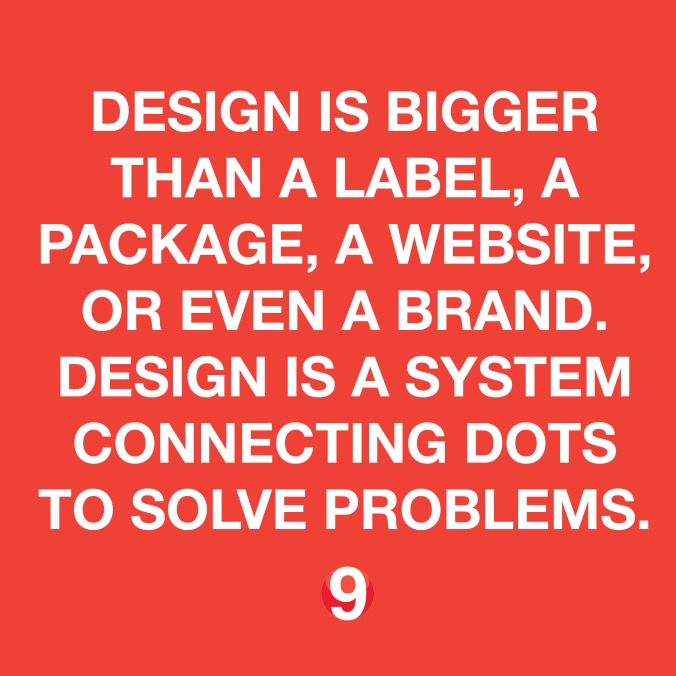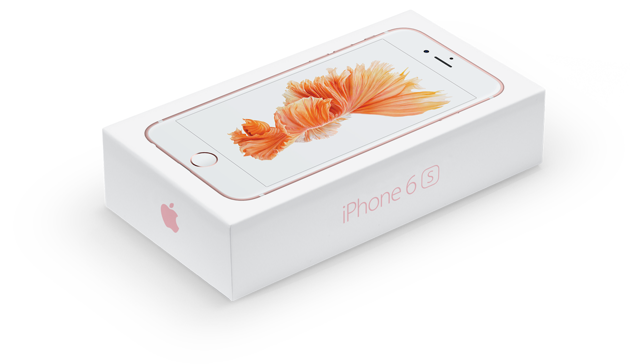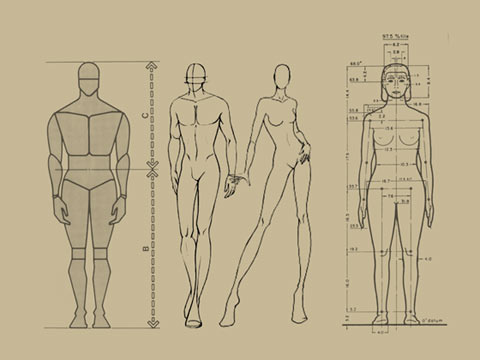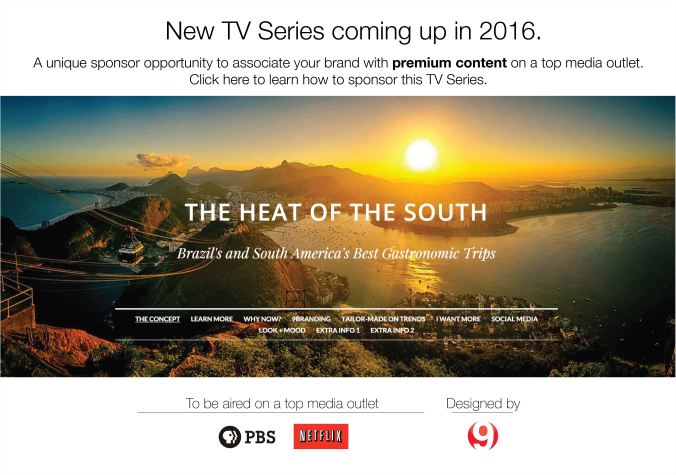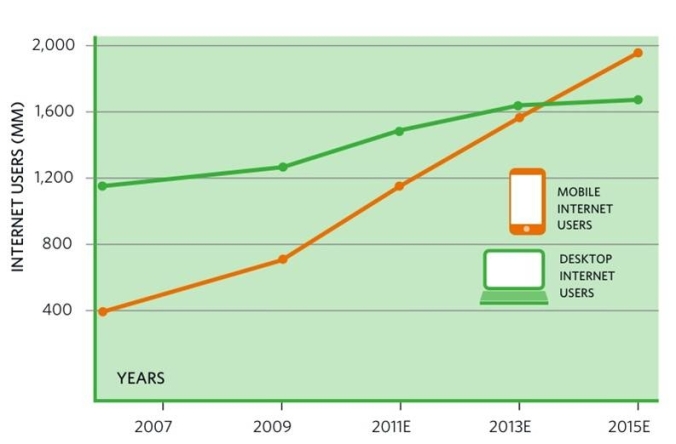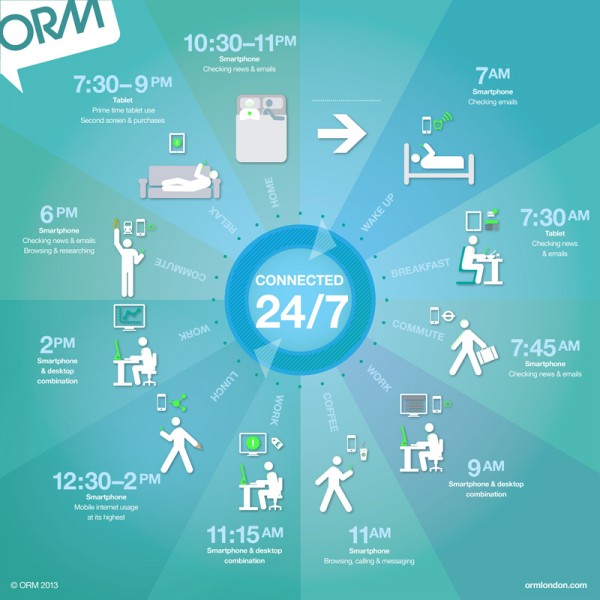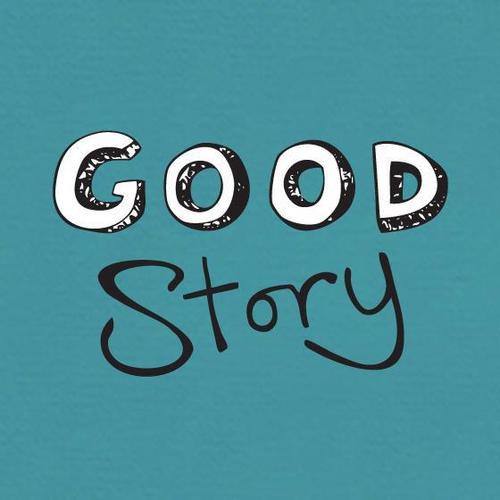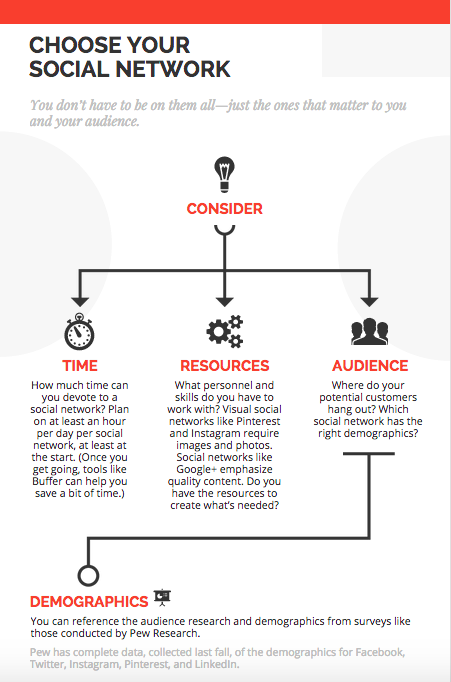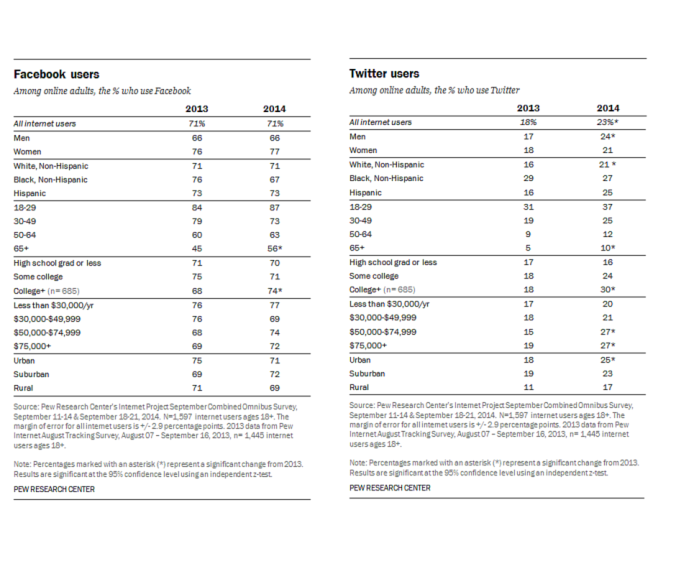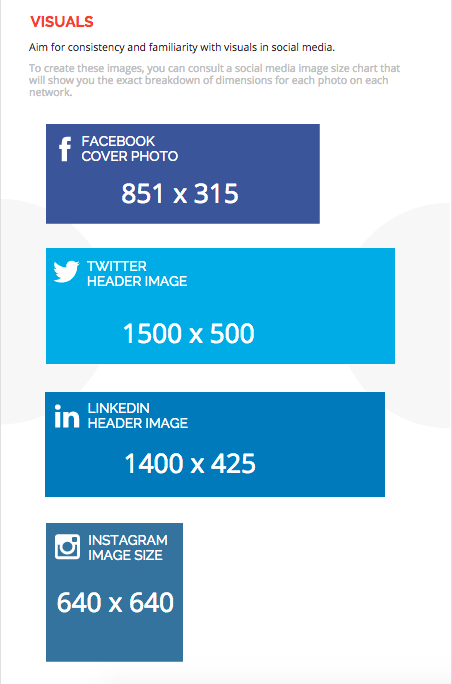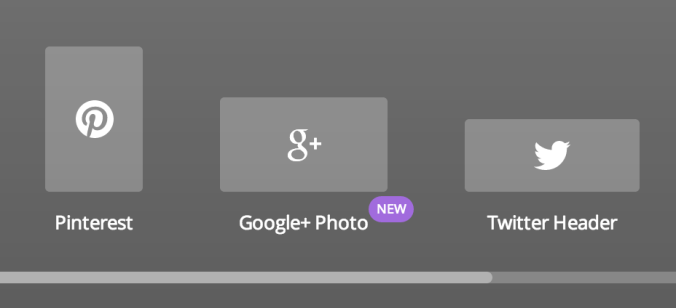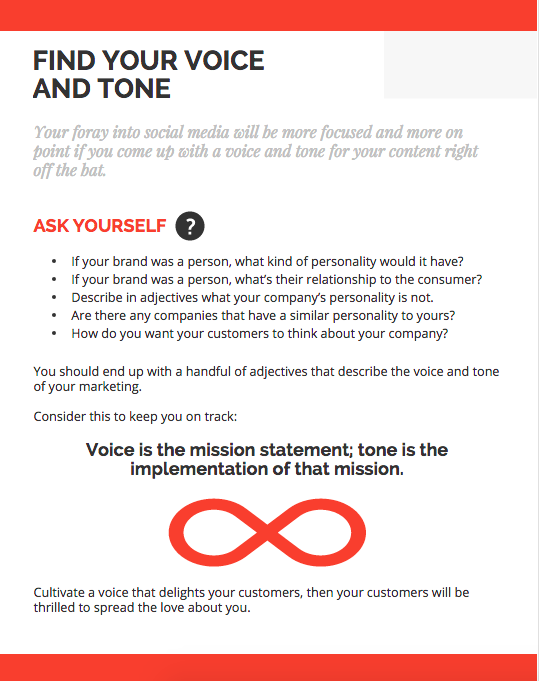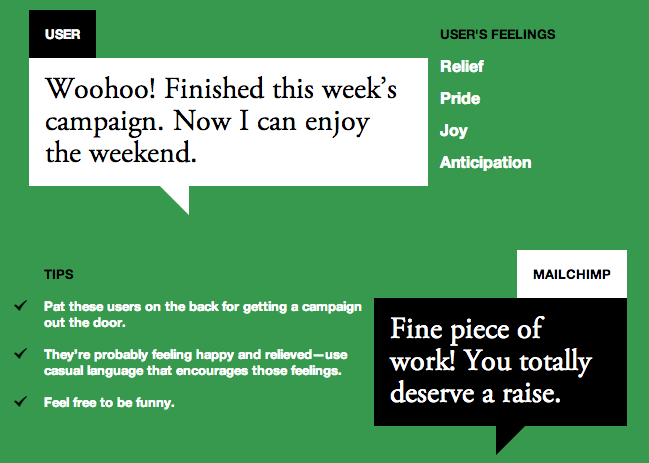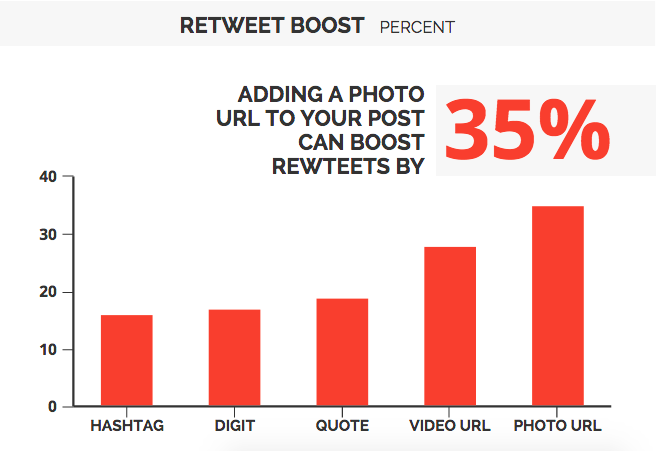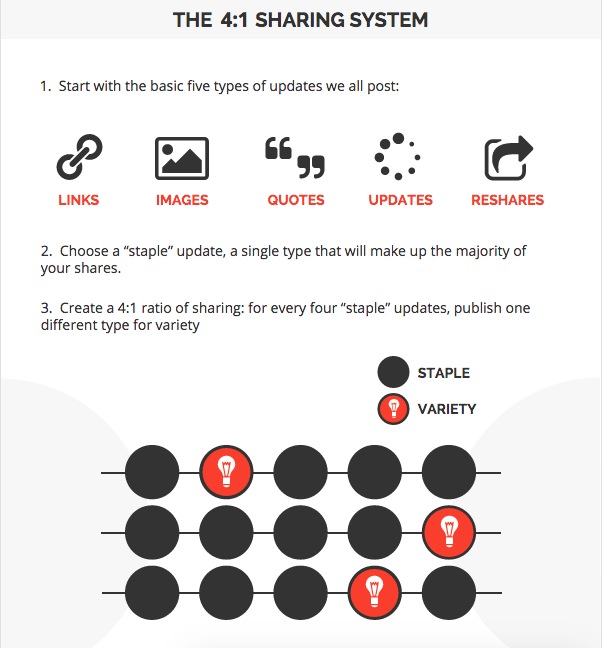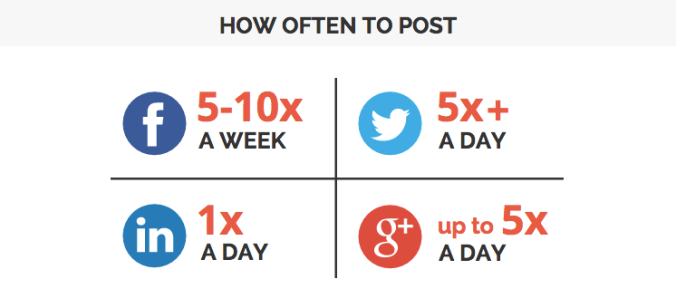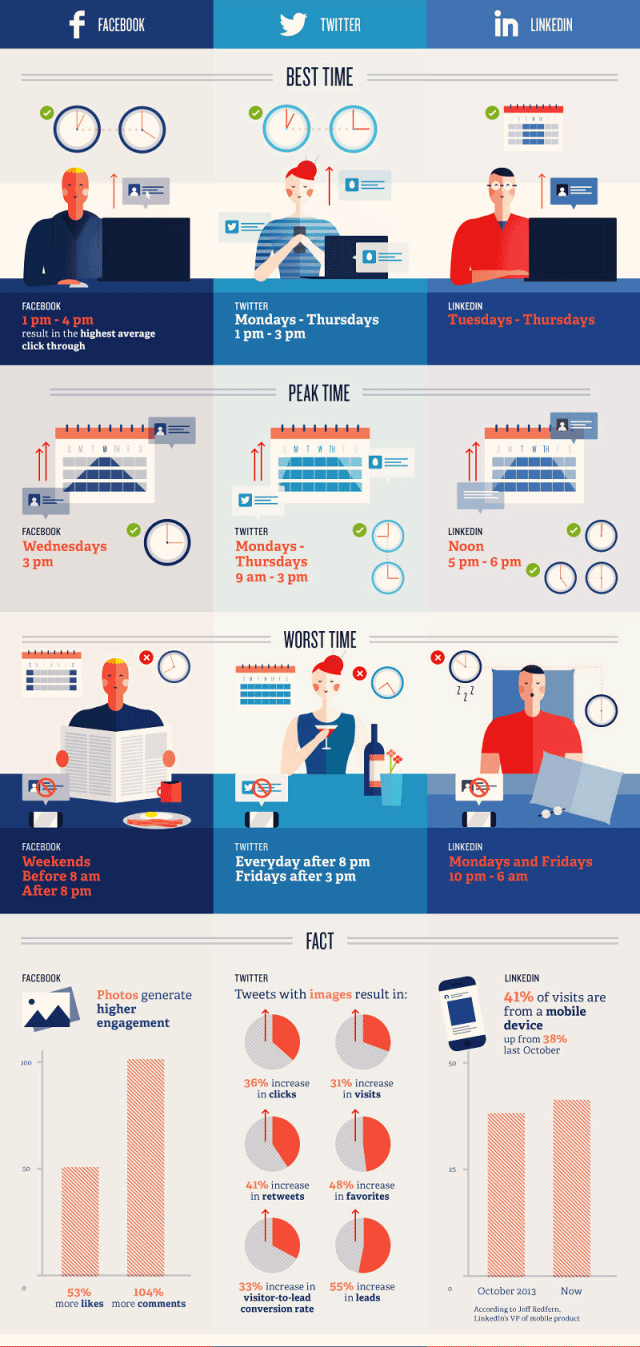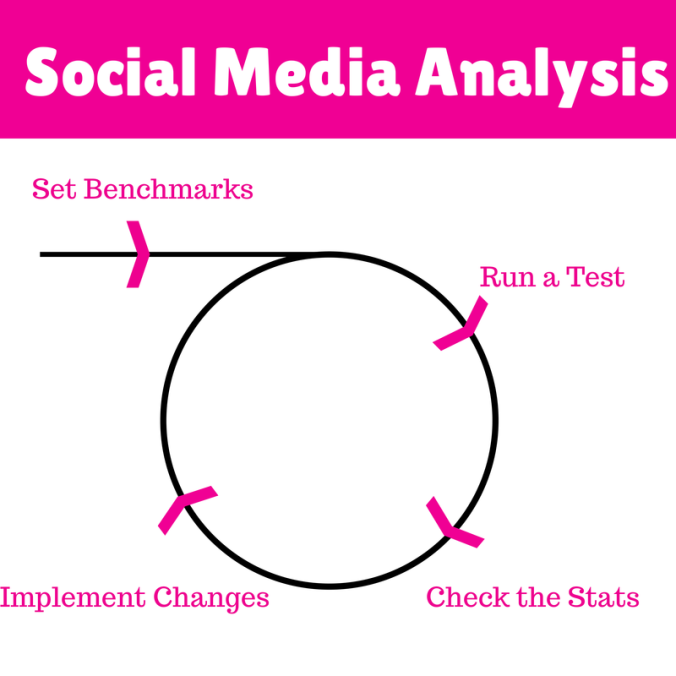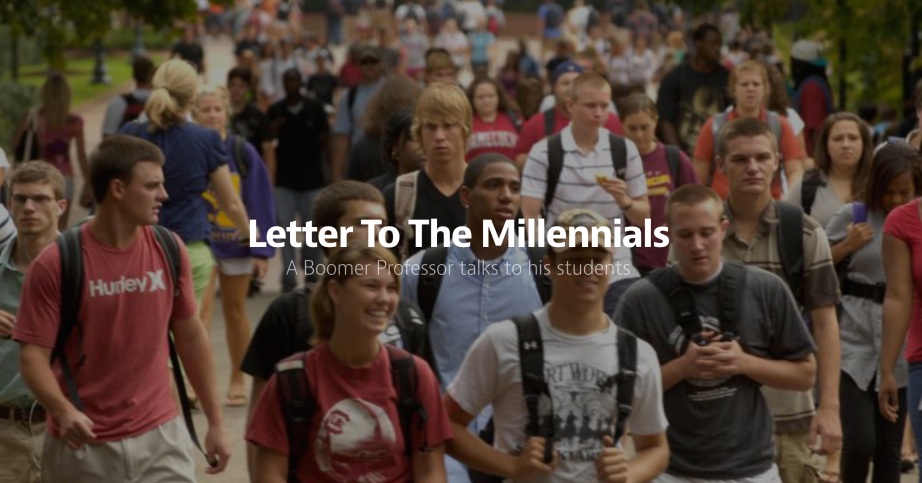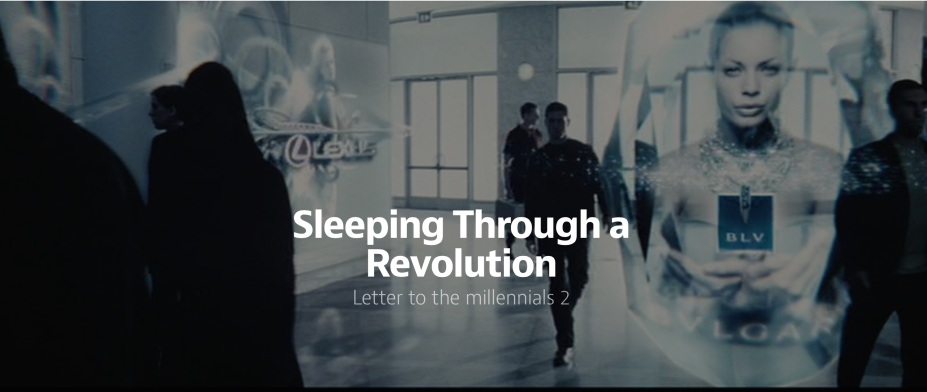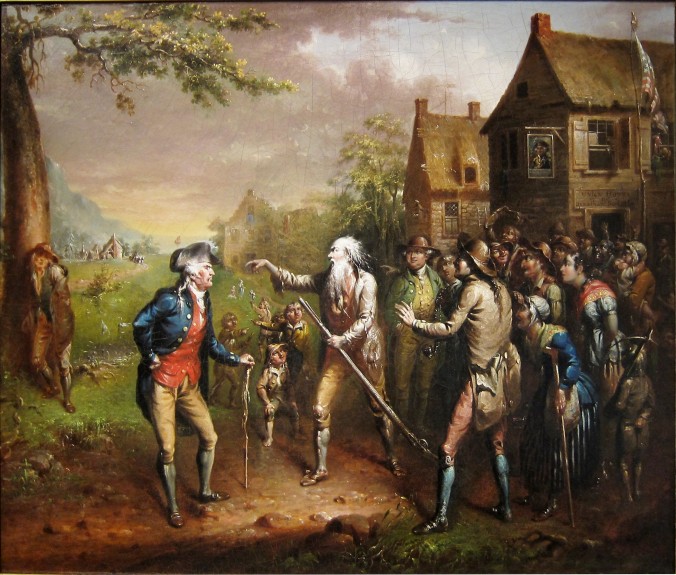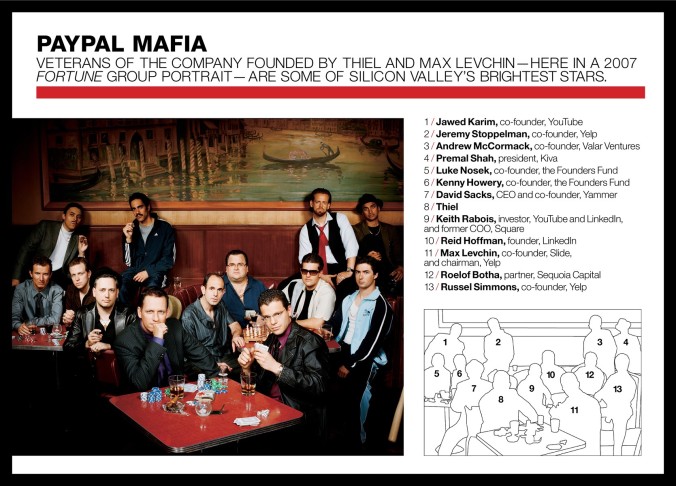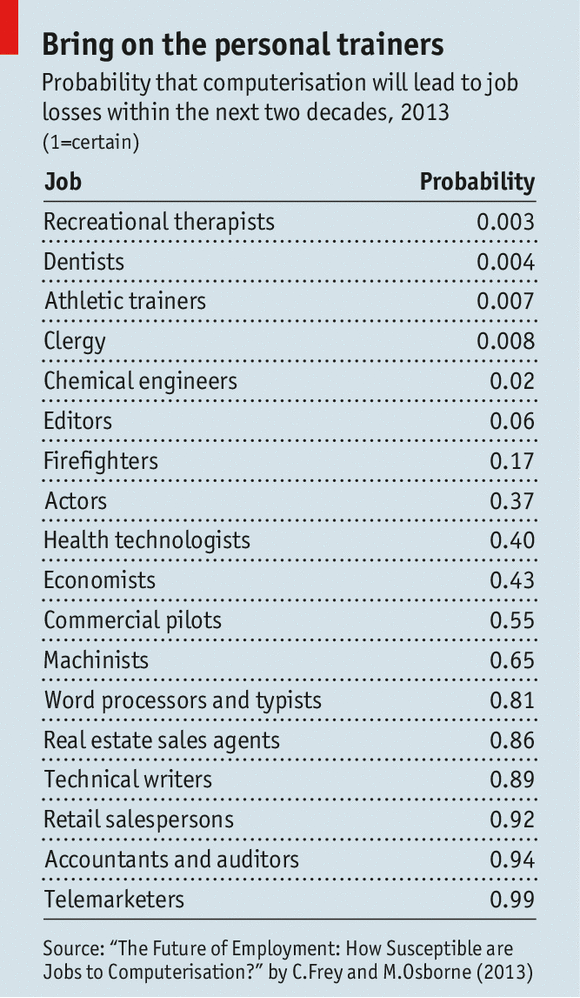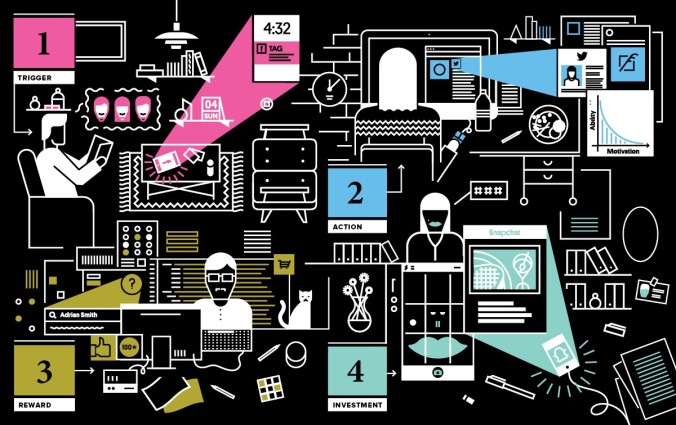How To Design a Website To Grow Your Business
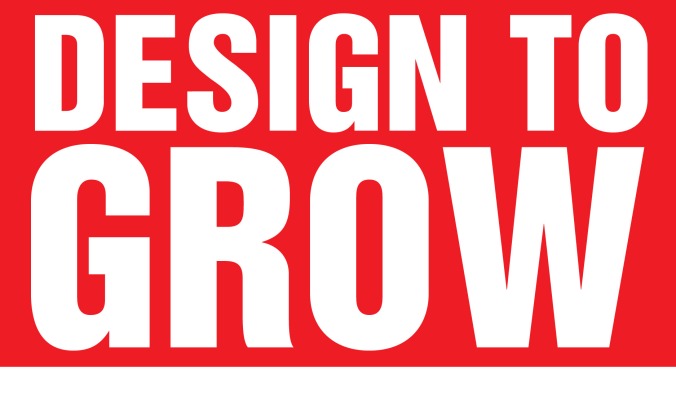 What if you could have a website always evolving, every day, with data and inputs from users and customers? Have you ever thought about approaching a site as a live organism, instead of an online brochure? Wouldn’t it be smarter and more cost-effective? It is just smarter when we can design, test, learn, adapt, and change. Not for the sake of changing, but to continuously improve user experience (UX) and customer experience (CX). Let’s talk about GDD, which stands for Growth-Driven Design. What’s is that exactly? Compare GDD and traditional approach to web design.
What if you could have a website always evolving, every day, with data and inputs from users and customers? Have you ever thought about approaching a site as a live organism, instead of an online brochure? Wouldn’t it be smarter and more cost-effective? It is just smarter when we can design, test, learn, adapt, and change. Not for the sake of changing, but to continuously improve user experience (UX) and customer experience (CX). Let’s talk about GDD, which stands for Growth-Driven Design. What’s is that exactly? Compare GDD and traditional approach to web design.
Think iPhone Upgrade Program for Websites
Growth-Driven Design ( GDD )
That is the way we approach website design: Growth-Driven Design. Instead of spending a big chunk every 18 or 24 months, and a few months later looking at an outdated internet site, why not build it smaller and faster, and upgrade your website every month, every week, every day?
GDD is like Apple’s iPhone Upgrade Program for your site.
Let’s dig a little deeper into this:
The Traditional Design
Have you ever stopped to think that if we want to stay updated regarding technology, we have to spend a considerable amount of money? And it has to happen every single year, if not less. Think of iPhone, for instance. Apple launches a new upgrade every year or so. If you have now an iPhone 5S (which you paid around $799 a year ago), and you want to upgrade your phone to the recently launched iPhone 6S, you have to put another big chunk of money down once again (around $899). Even if you convince yourself you don’t need to upgrade your phone, or you don’t want to spend money on it now, your current phone sadly starts to become an outdated piece of crap: the latest version of iOS won’t fit into the few gigabyte remaining, the coolest and most useful apps can’t be downloaded because of the iOS version your phone runs right now does not support them, the camera which was wonderful until some time ago, suddenly sounds like it is not that cool anymore (because the new camera on the new phone is almost 3 times more powerful), and so on.
Your top #1 salesperson
All right. Now think of your website with the same approach. You are a startup, and you have to redesign your site. Or maybe you want to design your first website to market your business, to make your products visible online. Starting up a new business involves a lot of work. You are investing money, maybe your money, which is a huge challenge. When the bureaucratic drill is done, and you get your paperwork to run, you have to think about how to market your business, how to tell your potential customers you are open for business, so they can choose your establishment to spend their money. You have to do it very well because the competition is ferocious out there.
When this time comes, you have to think about your top #1 salesperson: your website. Particularly in a digital world, where people are consistently connected online, and where people use mobile devices four times more than desktop computers or laptops, your website gains even more importance. Critical importance, we could say. These days, that is the arena where most people make their purchasing decisions: online and mobile. When they reach out to you, they are 80% or more decided to get your product or service.
That means our old mental model of web behavior has to evolve. People no longer go online for long sessions of research and browsing. Instead, they go online in short bursts of activity (and do it more often). They find information in small, bite-sized chunks along a larger customer journey, and they make decisions faster than ever before.
Think about your life: When you want to learn, find, do, or buy something, you reach for the nearest device to you—it’s like a digital reflex. This is what we mean by “micro-moments,” as Google call it. In these intent-rich moments, we’re actively reaching out for information to help us make better decisions.
The Implications of Micro-Moments
As a business owner, when designing your new website ( and your SEO strategy ), you need to pay attention to micro-moments. Why? Well, the brands that are there to help us in these moments are the ones who are going to win our hearts, minds, and ultimately our dollars.
There were three insights from Google’s ethnographic research that stood out: the importance of designing for immediacy, relevancy, and loyalty to needs. Let me explain:
- The immediacy of Action — Because smartphones allow us to act on any impulse at any time, we do. We reach for our devices any time we want to learn, find, do, or buy something. And as a result, our expectations for immediate gratification have risen to a new high.
- Demand for Relevancy — When we grab our phones and act on our impulse, we have high expectations, and our patience tends to be low. Since we don’t have much time to browse and research, we immediately abandon anything that’s not relevant to us and move on to something else.
- Loyalty to Personal Needs — When you combine the heightened expectation of instant gratification and relevancy, people tend to be more loyal to their personal needs and desires than they are to the brands they know and love.
If you want to leverage these moments, you need to understand the larger context that your users operate within. The full customer experience doesn’t start when people land on your website or start using your tool. It starts when they’re sitting on their couch, riding on the train, walking down the street, and they have an idea.
We know it is a lot do digest. Then, you start wondering what would be the best option to have your website. When you start fishing, you realize there is an insane amount of information and different options. In a few days or weeks, you feel overwhelmed with the huge amount of available offers.
But if you stop and think for a moment, you start realizing that the majority of design companies and agencies approach to web design the same way Apple used to approach iPhones until September 2015: you used to get a brand new iPhone, you had to put a big chunk of money down, and in 1 to 1,5 years your phone was totally outdated, almost obsolete.
Okay. You hire a design company to get your website done. You are very excited. You want the best result your money can get. You sign a contract, and the job starts out. You put a lot of information together, you answer a creative briefing, send it back to the company you have hired. Just to imagine a timeline of events, let’s say you start to invest in your website right now, September 2016 2015. Two or three months later you get the website ready to go.
Fast Forward to March 2017
The brand new site is launched. Emails are sent out to your contacts, friends, family, and prospects. Your social media profiles are updated. It’s an exciting day for the company. You spent a considerable amount of money already. There was a lot of back and forth between you and your team, and the design company. A lot of stress was involved. And the truth is: all people involved won’t be 100% sure if the final result is the best tool to launch your business, start to attracting visitors, turning them into leads, and into real customers, translated into sales and revenue for your business. Because your users and clients will start to having contact with your new website only on March 2017.
On top of that, there will probably be delays and issues. Within about two weeks after launching, a few bugs could start to emerge, and you are not sure anymore about some aspects on the website. For instance, the content you sent the design company three or four months ago when the project kicked off has changed.
Long story short – it’s not a great scenario. Maybe all people involved will be upset. But what caused this? What could have prevented this? The reason for these issues revolves around one thing: lack of planning and lack of understanding that your website is not about your company or just about cool, a trendy design from the design company. Your website is about the clients you work with and the problems your business solves for them.
Good design makes things less complicated.
Bad design makes things more complicated.
At the end of the day, both your business’ and the design company’s job is to make your clients happy. Period.
Apple has launched iPhone Upgrade Program, this past September 9th. Now if you sign up for this program, you pay smaller monthly amounts — instead of a big chunk at once — and you can upgrade your iPhone every year. Fantastic, huh?
So, what if you could have something similar for your website? Now you can.
Think iPhone Upgrade Program for you website. This is Growth-Drive Design
With Growth-driven Design, we can follow measurable metrics, and see how visitors use your site and design around it, with daily data analysis. We focus on building a site specifically for the users who will be interacting with you. We start small, with only the core products or services visible at launch — which should be no longer than 4-5 weeks from the time you sign a contract. What is essential for a conversion path that still tells the story of your brand? What your company is promising to deliver? What kind of problems do they have when they plan to go to travel or to buy something for their pets or to get a new hair dryer? How do you solve those problems? How do you make their buying experience easier?
Growth-Driven Design ( GDD ) aims to focus on those questions from the start, building a website with core products/services only, and adding new ones daily, weekly. Creating a smaller website from the start — and adding more products, and always measuring performance, learning from it, and improving — allows you to focus ONLY on what matters most.
This also allows us to daily / weekly monitor how visitors are interacting with your website, and how they are engaging with the content we have made available to them. Using this information, we can develop a brilliant conversion path and growth strategy, making the buyers’ journey the easiest possible way to…. buy.
The traditional design focuses on building a site over an extended period of time and “crossing fingers” it gets the results. The truth is that most websites look like static brochures online. Check out the amazing infographic at the end of this piece, designed by Josh Ames. Growth-Driven Design sees a website as a live organism, focuses on building something that learns all the time, and rocks in the effectiveness of website productivity, constantly evolving as your prospects evolve proves ROI and sets you up for tremendous long-term growth with a lead generation machine.
Design Can Create Both Scale and Agility. Pairing GDD & Inbound Marketing Also Creates Powerful Desirability.
It makes a lot of sense for us, and for our clients. After all, your website is the top #1 salesperson in your company. The combination of GDD with Inbound Marketing is powerful. It is the future of marketing. Because it is user-centered design, the design that evolves along with the agility your user / consumer wants.
Inbound Marketing + Growth-Driven Design is what has created happy clients for our customers. Because they know they are getting what they do, need.
It is all about the invisible driving the visible.
The human body is a perfect proof of good design that makes things less complicated. We possess 3,000,000,000,000 (three trillion) nerve cells all coordinated by the brain. We have thirty billion working sections in our brain. Our heart beats 100,000 times and pumps 2,000 gallons of blood every day. We breathe 438 cubic feet of air each day.
Every cell in the human body has 1,000,000,000,000 bits of data in it.
Our body has 639 muscles that must work together. And our joints must move 25,000,000 times in our lifetime without wearing out. There are 30,000,000,000,000 cells in our body with 10,000 functions.
Perfect design, huh? Well, yes. Indeed. Incredibly perfect design. Think of your website made for a real person in front of it, browsing it, navigating it, experiencing it.
Happily, for now, we can create websites with good design that works and evolves every day, learning from human functions. This is a great achievement. Soon, maybe we will have an upgrade program for our bodies as well. Who knows? That would be amazing, right?
Anyway, good design is user-centered design. Bad design only implies that designers need to improve their work. By deceiving or creating unrealistic expectations, the user depends on the designer’s intent — or in some cases in their supervisor’s plan or their clients’ intent. Usually, when users are getting what they are promised everything is fine. But when there is a misalignment between needs and service communication (promises) or interaction design things start going wrong. Humanized computer interactions are familiar to users and can save them time, all while deepening the concept of brand marketing.
This is beautiful because now we can have the website that learning from humans, not online brochures that give users a hard time. Web sites are live organisms.
I would love to know your thoughts. Please, if you like this article, share it. And if you want to learn more about how to design a website to grow your business, check out the form below.
How to Sponsor Premium Content on Top Media Outlets
Blending Sponsorship Into Compelling Stories
We are very excited to present the TV Series ‘The Heat of The South,’ an opportunity to sponsor a unique media platform that connects and engages audiences with your brand in much deeper emotional level. Because it delivers what the audience wants in terms of brand communication – just not with advertising. Consumers, especially Millennials, do not want to be sold to. They want to be educated. Click the banner below to learn more about this sponsorship opportunity.
‘The Heat of The South’ is a new TV Series hosted by some of the best Latin America’s Chefs exploring some of the most exciting places in the world, and bringing the conversation to the kitchen.
‘The Heat of The South’ will hit the road to explore historic landmarks and curiosities. We will invite entrepreneurs, musicians, artists, poets, social celebrities and ordinary people to share their best moments in the best places in Brazil, South America, and its influence in the USA, with food, music, culture, art, technology, history, trends, and more.
This is premium content tailor-made for your brand. Click here to check out details and first three episodes at a glance. See it just as a brainstorm, so you can have an idea of how your products can perfectly blend into these stories — and how we can create narratives that actually could match your brand’s personality.
To get detailed information about this premium sponsorship opportunity, please email me at alexmaia@nin9branding.com
In Love With Connecting
Distribution is just as important as creating content.
Content is king, distribution is queen.
In the U.S., and increasingly worldwide, more Google searches take place on mobile devices than on laptops or desktop computers.
Desktop has finally ceded its throne. But does this development really surprise anyone?
The ascent of smart devices — phones, watches, wearables etc. — has ushered in a new era for marketers. This is the era of the “micro-moment” as Google recently branded a unit of time.
According to Google, a micro-moment occurs “when people reflexively turn to a device — increasingly a smartphone — to act on a need to learn something, do something, discover something, watch something, or buy something.”
These moments may be brief, but don’t underestimate their impact.
Brands that learn, adapt, and practice will earn relevance and loyalty. All it takes is connecting adding value to each micro-moment,”
Brian Solis, principal analyst at Altimeter Group, thinks that brands need to be constantly learning about how their audiences connect.
These are the moments of truth of the digital age. Micro-moments occur frequently throughout the day, but each is the product of an instinctive response to a particular time and impulse. Each of these moments have a repeatable pathway to satisfying the impulse. For example, when some Mac users want to search something, they open their Safari app and type a subject in the browser bar. This is an easily repeatable pathway — one that quickly becomes habitual.
Solis noted the habit void that your content should be filling.
If a micro-moment happens and you’re not there to engage a consumer, then that consumer can only act on what he knows.”
The goal for any marketer is to become an essential element of “what he knows,”the habit pathway to achieving an impulse goal. Habit saves us time, concern, and consciousness. The channels that work best are those that are native to our understanding of the mobile devices we use, capable of doing significant work in short order.
In essence, these are bathroom-accessible channels. And these are the channels marketers have to target.
In Love With Connecting – Even In The Bathroom
People are now enabled by technology to do things they wouldn’t have otherwise conceived – it’s not as if technology was there, and people aspired to achieve what we’re able to do now. You can find like-minded people, and you can trade ideas, tips, secrets, and techniques. And it’s fascinating, which is probably why so many people are glued to their electronic mobile devices.
People are not in love with the technology or their devices. What they love is that they have found a personal connection to someone, either across the room or across the world – with whom they share a common bond. People are actually in love with the effect they can have by connecting with people.
That’s why people are glued to their mobile – even in the bathroom. Well, so reaching your audiences in the bathroom might not be the most romantic way to envision targeting, but it’s an effective one.
In fact, 75 percent of Americans bring their phone to the bathroom, and 70 percent of mobile searches lead to timely action. Meaning, distribution is just as important as creating content. To maximize these moments, your business should be distributing content on channels consumers can access while cleaning, cooking, waiting, shopping and, yes, even using the restroom.
Get to know your audience/community. Know where your community spontaneously spends time. Create mobile-friendly content that lives there.
Here are three questions to ask yourself when crafting your own content:
- Is it visually attractive? Tweets with images receive 18% more clicks, 89% more favorites, and 150% more retweets;
-
Is your content helpful to your community? Don’t get caught up in controlling the message. Instead, do things that are worthy of passing along. Show, don’t tell;
-
Is my content accessible to my community – even in the bathroom?
How do you plan to utilize connections when crafting content – turning these micro-moments of interactivity into macro-moments of magic? Please, share your thoughts.
Please, follow me on Twitter to get visual insights on digital marketing, content creation, and content distribution. Also, have a look at what we have been creating for our happy customers.
Click on this image if you would like to take a look at some more statistics.
Please, recommend and share this article.
Follow my visual tweets @9branding
The Roots of a Good Story
As a storyteller, I am always searching for new sources of inspiration. That’s how I can tell good stories, and design good brand experiences for my clients.
I’ve been watching an inspiring series of documentaries, ‘Chef’s Table’, on Netflix. The TV docu-series spotlights some of the most remarkable chefs de cuisine in the world. They have been also doing something different and innovative.
Listening to what one of the chefs had to say, triggered some brand thinking:
There is a real advantage to creating a cuisine, a menu where the vectors do not all point at you, at the chef. Where the food you’re eating or the place you are at points out to something larger, a restaurant that has an overriding message and purpose. It is about something.”
Dan Barber, celebrated chef, dedicated farmer and food industry revolutionary, has an interesting approach to his work as a chef. He’s been leading a fight to change the way we think about, and grow, our food. I think we all have a lot to learn from his vision.
The way he sees how a chef can change the world for good, has been defining his brand, and his business brand. The most interesting aspect about it, though, is that he wasn’t looking to put the spotlight on himself.
When your surrounding community defines what your brand is about – not the brand manager or the brand owner – you have a solid advantage in your hands. Because brands are created in people’s mind – not in a restaurant, or in a factory, or in a farm.
Brands are stories, brands are experiences. Brands are not logos. Logos are graphic signs. If you design or redesign your logo, you are not redefining or managing your brand. The logo is a nice foundation, and it’s an identifier. But it’s not the brand. A brand is not necessarily visual. It’s a promise of an experience.
A brand is a code. There’s always been some sort of code. People attach themselves to a code that signifies to others, “I’m in this group. This is my tribe. That’s the story in what I believe in.”

When customers have the opportunity to be part of your vision and your battle for good, they have memorable moments to share, and great stories to tell about your business and your brand.
That is reverse branding. That is the present and the future of branding.
When you invest time and energy to create great moments for your customers and community, the most mundane transaction can be turned into a remarkable experience.

Stories are what make people build a relationship with each other. Give people a reason to talk about you. We pay far more attention to recommendations from friends, family, and even strangers than we do to advertisements. Don’t get caught up in controlling the message. Instead, do things that are worthy of passing along.
Do you have a story to share? Be my guest. I would love to be inspired by one of your stories.
Please, recommend and share this article.
Follow my visual tweets @9branding
Cheers!
How to Create a Social Media Marketing Plan From Scratch
When I went rock climbing for the first time, I had no idea what I was doing. My friends and I were complete newbies about ropes and rappelling and every other bit of jargon and technique that goes with climbing. We saw others doing it spectacularly well. We were thrilled at the thought of reaching the top of the climbing wall; we had no idea how to get there.
I’d imagine that a social media marketing plan could feel the same way.
If you’re starting from square one, it might feel equal parts thrilling and overwhelming. You know what you want to do and why. You can see that others have climbed the social media mountain; you’ve got few ideas how to get there yourself.
It’d help to have a plan.
We’ve shared before about different parts of a social media marketing plan—the data and research and personal experience behind what works on social media. Now we’re pleased to put it all into a cohesive, step-by-step blueprint that you can use to get started. If you need a social media marketing plan, start here.
Oh, and our friends at online infographic maker Venngage were kind enough to wrap all that follows into a comprehensive infographic that’s easy to keep, share and reference:
Social Media Marketing Plan
Starting at the ground flour and building up, here is our overview of how to create a social media marketing plan from scratch.
I like to think of this plan like a roadtrip. Start out by pointing yourself in the right direction, then choose the way you’re going to get there, check in regularly to make sure you’re on track, and have some fun along the way.
Step 1: Choose your social networks
Step 2: Fill out your profiles completely
Step 3: Find your voice and tone
Step 4: Pick your posting strategy
Step 5: Analyze and test
Step 6: Automate and engage
Step 1: Which social media sites you should use
Social media is as homogenous from network to network as soda pop is from brand to brand. Sure, it’s all social media, but Google+ and Twitter might as well be Mountain Dew and Pepsi. Each network is unique, with its own best practices, own style, and own audience.
You should choose the social networks that best fit your strategy and the goals you want to achieve on social media.
You don’t have to be on them all—just the ones that matter to you and your audience.
Some things to consider that can help you choose not only which social networks to try but also how many to try.
Time – How much time can you devote to a social network? Plan on at least an hour per day per social network, at least at the start. (Once you get going, tools like Buffer can help you save a bit of time.)
Resources – What personnel and skills do you have to work with? Visual social networks like Pinterest and Instagram require images and photos. Social networks like Google+ emphasize quality content. Do you have the resources to create what’s needed?
Audience – Where do your potential customers hang out? Which social network has the right demographics?
For the latter part of this decision, you can reference the audience research and demographics from surveys like those conducted by Pew Research. For instance, Pew has complete data, collected last fall, of the demographics for Facebook, Twitter, Instagram, Pinterest, and LinkedIn. Here is a side-by-side comparison of Facebook and Twitter demographics.
Step 2: Fill out your profiles completely
One of our monthly checks here at Buffer is to visit each of our social media profiles and make sure that our avatars, cover photos, bio, and profile info is up-to-date and complete. It’s a key part to our social media audit. A completed profile shows professionalism, cohesive branding, and a signal to visitors that you’re serious about engaging.
Profiles will require two parts: visuals and text.
For visuals, we aim for consistency and familiarity with the visuals we use on social media. Our avatar on Twitter matches our avatar on Facebook. Our cover photo on Google+ is similar to our cover on LinkedIn.
To create these images, you can consult a social media image size chart that will show you the exact breakdown of dimensions for each photo on each network. For an even easier time of it, you can use a tool like Canva, which comes with prebuilt templates that set the proper sizes for you.
For text, your main area to customize is the bio/info section. Creating a professional social media bio can be broken down into six simple rules.
- Show, don’t tell: “What have I done” often works better than “Who I am”
- Tailor your keywords to your audience
- Keep language fresh; avoid buzzwords
- Answer the question of your potential followers: “What’s in it for me?”
- Be personal and personable
- Revisit often
Step 3: Find your marketing voice and tone
The temptation at this point might be to jump right in and start sharing. Just one more step before you do. Your foray into social media will be more focused and more on point if you come up with a voice and tone for your content right off the bat.
To do so, you could spend time coming up with marketing personas and debating the finer points of your mission statement and customer base. These are all well and good. However, for a social media marketing plan just getting off the ground, you can make this process a bit easier. Start with questions like these:
- If your brand was a person, what kind of personality would it have?
- If your brand was a person, what’s their relationship to the consumer? (a coach, friend, teacher, dad, etc)
- Describe in adjectives what your company’s personality is not.
- Are there any companies that have a similar personality to yours? Why are they similar?
- How do you want your customers to think about your company?
At the end of this exercise, you should end up with a handful of adjectives that describe the voice and tone of your marketing. Consider this to keep you on track: Voice is the mission statement; tone is the implementation of that mission.
MailChimp has created a standalone website simply for its voice and tone. Here’s an example of how they implement these qualities into their communication:
Cultivate a voice that delights your customers, then your customers will be thrilled to spread the love about you.
Step 4: Pick your posting strategy
What’s the ideal amount to post per day? How often should you post? When should you post? What should you post? The solid gold, ironclad answer on questions like these is:
It depends.
So much of the social media experience is about your individual audience and niche. What works for you might not work for me, and you never know until you try (we’ll get to trying in step five).
That being said, there is some pretty good data and insight about where to start. Here’s what we’ve found to be good jumping off points.
What should you be posting?
Images are ideal.
The push toward visual content has plenty of anecdotal evidence—as you browse the streams on Twitter and Facebook, you’re likely to see images all over. There’s data to back up this change: Image posts get more views, clicks, reshares, and likes than any other type of post. And it’s not even close.
On Facebook, photos get 53% more likes, 104% more comments and 84% more click-throughs on links than text-based posts.
Same goes for Twitter. In a study of over two million tweets from verified users across a number of different industries, Twitter found that photos have the greatest effect on retweets.
- Photos average a 35% boost in Retweets
- Videos get a 28% boost
- Quotes get a 19% boost in Retweets
- Including a number receives a 17% bump in Retweets
- Hashtags receive a 16% boost
The 4:1 Strategy
Now that you know what works, you can place these different types of updates into a consistent strategy. One of my favorite systems is the one used by Buffer’s co-founder Joel Gascoigne. It works like this:
- Start with the basic five types of updates we all post: Links, images, quotes, reshares, plain-text updates
- Choose a “staple” update, a single type that will make up the majority of your shares
- Create a 4:1 ratio of sharing: for every four “staple” updates, publish one different type for variety
This way your followers know what to expect from you, and you can hone your sharing to a specific type, making it easier to perfect and to experiment.
(Note: You might won’t want to post the exact same updates across each of your social networks. Consider composing your updates in a unique way to complement each network’s own best practices, culture, and language.)
How often should you be posting?
There’s been a lot of interesting data out there about how often to post to social media. Some of the factors that might impact your specific sharing frequency may include your industry, your reach, your resources, and the quality of your updates. The social network you’re using will have its own best practices, too.
If people love your updates, you can typically always get away with posting more.
For a specific number, here’re some guidelines we’ve put together based on some really helpful research into how often to post to social media.
When should you be posting?
There are many neat tools to show you the best time of day to post to Facebook, Twitter, and more. These tools look at your followers and your history of posts to see when your audience is online and when historically have been your best times to share.
So what’s someone to do who’s just starting out on these social networks, with no audience and no history?
Again, this is where best practices come in. Perhaps the most helpful (and adorable) infographic I’ve seen about timing comes from SumAll, whichcompiled timing research from sites like Visual.ly, Search Engine Watch, and Social Media Today to create its awesome visual. Here’s an overview of what they found in terms of timing (all times are Eastern Time).
- Twitter – 1-3pm weekdays and around 12AM
- Facebook – 1-4pm and 2-5pm weekdays
- LinkedIn – 7-8:30am and 5-6pm Tuesday, Wednesday, and Thursday
- Tumblr – 7-10pm weekdays and 4pm on Fridays
- Instagram – 5-6pm weekdays and 8pm on Mondays
- Pinterest – 2-4pm and 8-11pm weekdays with weekends being the best
- Google+ – 9-11am weekdays
Step 5: Analyze, test, and iterate
Remember how we talked about social media sharing being a very individual, specific endeavor? Your stats will likely start to bear this out.
The more you post, the more you’ll discover which content, timing, and frequency is right for you.
How will you know? It’s best to get a reporting tool. Most major social networks will have basic analytics built into the site; it’s just a little easier to seek and find this information from an all-encompassing dashboard.
These tools (I’ll use Buffer’s analytics as an example) can show you a breakdown of how each post performed in the important areas of views, clicks, shares, likes, and comments.
Which social media stats are best? We’ve gained some insight from looking at each of these main statistics and the composite engagement stat on a per-post basis. The resulting stat gives us a great look, over time, of how our social media content tends to perform, and we can then test and iterate from there.
Here’s one way this analysis step.
Set a benchmark. After two weeks or a month of sharing, you can go back through your stats and find the average number of clicks, shares, likes, and comments per post. This’ll be your benchmark going forward. You can come back and update this number at any time as your following and influence grows.
Test something new. We’re open to testing just about anything at Buffer. We’re in the midst of some tests right now on our Twitter account. Do Twitter-optimized images gain more clicks than non-optimized images? Does capitalization matter? We’ll often hear about someone’s new strategy or get a new idea and then test right away.
Did it work? Check the stats from your test versus the stats of your benchmark. If your test performed well, then you can implement the changes into your regular strategy. And once your test is over, test something new.
Step 6: Automate, engage, and listen
The final piece of a social media marketing plan involves having a system you can follow to help you stay on top of updates and engaged with your community.
To start with, automate your updates. Tools like Buffer allow you to create all the content and updates that you want to, all at once, and then place everything into a queue to be sent out according to whatever schedule you choose. Automation is the secret weapon for consistently excellent sharing, day after day.
Your plan doesn’t end with automation, though. Social media requires engagement, too. When people talk to you, talk back. Set aside time during your day to followup with conversations that are happening on social media. These are conversations with potential customers, references, friends, and colleagues. They’re too important to ignore.
One way to stay up on all the conversations that are happening around you and your company is to create a system for listening. Tools like Mention will send you an alert every time you’re mentioned online, and you can rely on custom searches and email alerts for mentions on specific networks, too.
What would you share with someone new to social media?
Coming up with a social media marketing plan is a great step toward diving in to social. If social media looks thrilling and overwhelming all at once, start with a plan. Once you see the blueprint in front of you, it’s a little easier to see what lies ahead.
- Pick your networks
- Fill out your info
- Find your voice
- Choose your strategy
- Analyze and test
- Automate and engage
Bingo!
How did you develop your social media strategy? I’d love to keep the conversation going in the comments. If you know someone who could use this, feel free to pass this along. If you can use it yourself, let me know how it goes.
Please, recommend and share this article.
Follow my visual tweets for helpful insights. To learn more about 9branding, click here.
By KEVAN LEE Content Crafter at Buffer – saving your time on social media.
Design Pills: Gestalt Design
The Gestalt Principles
Gestalt is a psychology term which means “unified whole”. It refers to theories of visual perception developed by German psychologists in the 1920s. These theories attempt to describe how people tend to organize visual elements into groups or unified wholes when certain principles are applied. These principles are:
Similarity
Similarity occurs when objects look similar to one another. People often perceive them as a group or pattern.

The example above (containing 11 distinct objects) appears as a single unit because all of the shapes have similarity.
Unity occurs because the triangular shapes at the bottom of the eagle symbol look similar to the shapes that form the sunburst.
When similarity occurs, an object can be emphasized if it is dissimilar to the others. This is called an anomaly.

The figure on the far right becomes a focal point because it is dissimilar to the other shapes.
Continuation
Continuation occurs when the eye is compelled to move through one object and continue to another object.

Continuation occurs in the example above because the viewer’s eye will naturally follow a line or curve. The smooth flowing crossbar of the “H” leads the eye directly to the maple leaf.
Closure
Closure occurs when an object is incomplete or space is not completely enclosed. If enough of the shape is indicated, people perceive the whole by filling in the missing information.

Although the panda above is not complete, enough is present for the eye to complete the shape. When the viewer’s perception completes a shape, closure occurs.
Examples
Photo by Lucas Compan | Long Island City Piers, New York
Proximity
Proximity occurs when elements are placed close together. They tend to be perceived as a group.

The nine squares above are placed without proximity. They are perceived as separate shapes.

When the squares are given close proximity, unity occurs. While they continue to be separate shapes, they are now perceived as one group.

The fifteen figures above form a unified whole (the shape of a tree) because of their proximity.
Figure and Ground
The eye differentiates an object from its surrounding area. a form, silhouette, or shape is naturally perceived as a figure (object), while the surrounding area is perceived as ground (background).
Balancing figure and ground can make the perceived image more clear. Using unusual figure/ground relationships can add interest and subtlety to an image.
Figure
The word above is clearly perceived as a figure with the surrounding white space ground.

In this image, the figure and ground relationships change as the eye perceives the form of a shade or the silhouette of a face.

This image uses complex figure/ground relationships which change upon perceiving leaves, water, and tree trunk.
GESTALT PDF EXERCISE SHEET
Letter To The Millennials : 1
By Jonathan Taplin – Director, USC Annenberg Innovation Lab. Producer, “Mean Streets”, “The Last Waltz”, “Until the End Of the World”, “To Die For”
So we are about to embark on a sixteen-week exploration of innovation, entertainment, and the arts. This course is going to be about all three, but I’m going to start with the “art” part — because without the art, no amount of technological innovation or entertainment marketing savvy is going to get you to go to the movie theater. However, I think there’s also a deeper, more controversial claim to be made along these same lines: Without the art, none of the innovation matters — and indeed, it may be impossible — because the art is what gives us vision, and what grounds us to the human element in all of this. Although there will be lectures, during which I’ll do my best to share what I’ve learned about the way innovation, entertainment, and the arts fit together, the most crucial part of the class is the dialogue between us, and specifically the insights coming from you as you teach me about your culture and your ideals. The bottom line is that the world has come a long way, but from my perspective, we’re also living in uniquely worrisome times; my generation had dreams of how to make a better life that have remained woefully unfulfilled (leaving many of us cynical and disillusioned), but at the same time your generation has been saddled with the wreckage of our attempts and are now facing what may seem to be insurmountable odds. I’m writing this letter in the hopes that it will help set the stage for a truly cross-generational dialogue over the next sixteen weeks, in which I help you understand the contexts and choices that have brought us where we are today, and in which you help me, and one another, figure out the best way to move forward from here.

When I was your age, I had my heart broken and my idealism challenged multiple times by the assassinations of my political heroes: namely, John and Bobby Kennedy and Martin Luther King. Many in my generation turned away from politics and found our solace in works of art and entertainment. So one of the things I want to teach you about is a time from 1965–1980 when the artists really ruled both the music and the film industries. Some said “the lunatics had taken over the asylum” (and, amusingly enough, David Geffen named his record company Asylum), but if you look at the quality of work that was produced, it was extraordinary; in fact, most of it is still watched and listened to today. Moreover, in that period the most artistic work also sold the best: The Beatles’ Sgt. Pepper was without doubt the best record of the year but also the best selling, and The Godfather was similarly both best movie of the year and the biggest box office hit. That’s not happening right now, and I want to try to understand why that is. I want to explore, with you, what the implications of this shift might be, and whether this represents a problem. It may be that those fifteen years your parents and I were lucky enough to experience was one of those renaissance moments that only come along once every century, so perhaps it’s asking too much to expect that I’ll see it occur again in my lifetime. Nevertheless, I do hope it happens at least once in yours.
I spoke of the heartbreak of political murder that has permanently marked me and my peers, but we have also been profoundly disappointed by politics’ failure to improve the lives of the average citizen. In 1969, the median salary for a male worker was $35,567 (in 2012 dollars). Today, it is $33,904. So for 44 years, while wages for the top 10% have continued to climb, most Americans have been caught in a “Great Stagnation,” bringing into question the whole purpose of the American capitalist economy (and, along the way, shattering our faith in the “American Dream”). The Reagan-era notion that what benefited the 1% — “the establishment” — would benefit everyone has by now been thoroughly discredited, yet it seems that we are still struggling to pick up the pieces after this failed experiment.
Seen through this lens, the savage partisanship of the current moment makes an odd kind of sense. What were the establishment priorities that moved inexorably forward in both Republican and Democratic administrations? The first was a robust and aggressive foreign policy. As Stephen Kinzer wrote about those in power during the 1950s, “Exceptionalism — the view that the United States has a right to impose its will because it knows more, sees farther, and lives on a higher moral plane than other nations — was to them not a platitude, but the organizing principle of daily life and global politics.”

From Eisenhower to Obama, this principle has been the guiding light of our foreign policy, bringing with it annual defense expenditures that dwarf those of all the world’s major powers combined. The second principle of the establishment was that “what is good for Wall Street is good for America.” Despite Democrats’ efforts to paint the GOP as the party of Wall Street, one would only have to look at the track record of Clinton’s treasury secretaries Rubin and Summers (specifically, their zealous efforts to kill the Glass-Steagal Act and deregulate the big banks and the commodities markets) to see that both major parties are guilty of sucking up to money; apparently, the establishment rules no matter who is in power. Was it any surprise, then, that Obama appointed the architects of bank deregulation, Summers and Geithner, to clean up the mess their policies had caused? Was it any surprise that they failed? Was it any surprise that establishment ideas about the surveillance state were not challenged by Obama? The good news is that, as a nation, we have grown tired of being the world’s unpaid cop, and we are tired of dancing to Wall Street’s tune. Slowly, we are learning that these policies may benefit the 1%, but they don’t benefit the people as a whole. My guess is the 2016 election may be fought on this ground, and we may finally begin to see real change, but the fact remains that we — both your generation and mine — are right now deeply mired in the fallout of unfulfilled promises and the failures of the political system.
So this is the source of boomer disillusionment. But even if we are cynical about political change, we can try to imagine together a future where great artistic work continues to flourish; this, then, is the Innovation and Entertainment part of the course. It’s not that I want you to give up on politics — in fact the events of the last few weeks in Ferguson only reinforce my belief that when people disdain politics, their anger gets channeled into violence. But what I do want you to think about is that art and culture are more plastic — they can be molded and changed easier than politics. There is a sense in which art, politics, and economics are all inextricably and symbiotically tied together, but history has proven to us that art serves as a powerful corrective against the dangers of the establishment. There is a system of checks and balances in which, even though the arts may rely on the social structures afforded by strong economic and political systems, artists can also inspire a culture to move forward, to reject the evils of greed and prejudice, and to reconnect to its human roots. If we are seeking a political and economic change, then, an authentic embrace of the arts may be key. Part of your role as communication scholars is to look more closely at the communication surrounding us and think critically about the effects its having, whose agenda is being promoted, and whether that’s the agenda that will serve us best. One of the tasks we’ll wrestle with in this class will be how we can get the digital fire hose of social media to really support artists, not just brands.

In 2011, the screenwriter Charlie Kaufman (Being John Malkovich,Adaptation) gave a lecture at the British Film Institute. He said something both simple and profound:
People all over the world spend countless hours of their lives every week being fed entertainment in the form of movies, TV shows, newspapers, YouTube videos and the Internet. And it’s ludicrous to believe that this stuff doesn’t alter our brains.
It’s also equally ludicrous to believe that — at the very least — this mass distraction and manipulation is not convenient for the people who are in charge. People are starving. They may not know it because they’re being fed mass produced garbage. The packaging is colorful and loud, but it’s produced in the same factories that make Pop Tarts and iPads, by people sitting around thinking, “What can we do to get people to buy more of these?
And they’re very good at their jobs. But that’s what it is you’re getting, because that’s what they’re making. They’re selling you something. And the world is built on this now. Politics and government are built on this, corporations are built on this. Interpersonal relationships are built on this. And we’re starving, all of us, and we’re killing each other, and we’re hating each other, and we’re calling each other liars and evil because it’s all become marketing and we want to win because we’re lonely and empty and scared and we’re led to believe winning will change all that. But there is no winning.
I think Charlie is right. People are starving, so we give them bread and circuses.
But I think Charlie is wrong when he says “there is no winning”. In fact I think we are really in a “winner-take-all” society. Look at the digital pop charts. 80% of the music streams are for 1% of the content. That means that Jay-Z and Beyoncé are billionaires, but the average musician can barely make a living. Bob Dylan’s first album only sold 4,000 copies. In this day and age, he would have been dropped by his label before he created his greatest work.

A writer I greatly admired, Gabriel García Márquez, died recently. For me, Márquez embodied the role of the artist in society, marked by the refusal to believe that we are incapable of creating a more just world. Utopias are out of favor now. Yet Marquez never gave up believing in the transformational power of words to conjure magic and seize the imagination. The other crucial aspect of Márquez’s work is that he teaches us the importance of regionalism. In a commercial culture of sameness where you can stroll through a mall in Shanghai and forget that you’re not in Los Angeles, Marquez’s work was distinctly Latin American. His work was as unique as the songs of Gilberto Gil, or the cinema of Alejandro González Iñárritu. In a cultural like ours that has so long advocated a “melting pot” philosophy that papers over our differences, it is valuable to recognize that there is a difference between allowing our differences to serve as barriers and appreciating the things that make each culture unique, situated in time and space and connected to its people. What’s more, young artists also need to have the sense of history that Marquez celebrated when he said, “I cannot imagine how anyone could even think of writing a novel without having at least a vague of idea of the 10,000 years of literature that have gone before.” Cultural amnesia only leads to cultural death.
With these values in mind, my hope is to lead you in a discussion of politics and culture in the context of 250 years of America’s somewhat utopian battle to build “a city on a hill.” I think many in my generation had this utopian impulse (which is, it should be observed, different than idealism), but it is slipping away like a short-term memory. I did not aspire to be that professor who quotes Dr. King, but I feel I must. He said the night before he was assassinated, “I may not get there with you, but I believe in the promised land.” My generation knew that the road towards a better society would be long, but we hoped our children’s children might live in that land, even if we weren’t able to get there with you. It may take even longer than we imagined, but I know your generation believes in justice and equality, and that fills me with hope that the dream of some sort of promised land is not wholly lost. The next step, then, is to figure out how to work together, to learn from the past while living in the present moment in order to secure a better future, and I believe this class offers us an incredible opportunity to do precisely that.
So what are the skills that we can develop together in order to open a real cross-generational dialogue? First, I would hope we would learn to improvise. I want you to challenge me, just as I encourage and challenge you. Improvisation means sometimes throwing away your notes and just responding from your gut to the ideas being presented. It takes both courage and intelligence, but I’m pretty sure you have deep stores of both qualities, which will help you show leadership both in class and throughout the rest of your life. Leadership is more than just bravery and intellect, however; it also requires vulnerability and compassion, skills that I hope we can similarly cultivate together. I want you to know that I don’t have all the answers — and, more importantly, I know that I don’t have all the answers. I am somewhat confused by our current culture and I am looking to you for insight. You need to have that same vulnerability with your peers, and you also need to treat them with compassion as you struggle together to understand this new world of disruption. I know these four elements — courage, intelligence, vulnerability, and compassion — may seem like they are working at cross-purposes, but we will need all four qualities if we are to take on the two tasks before us. One of our tasks is to try to restore a sense of excellence in our culture — the belief that great art and entertainment can also be popular. The second task is for baby boomer parents and their millennial children to form a natural political alliance going forward. As I’ve said, I don’t think the notion that we will get to “the promised land” is totally dead, and with your energy and the tools of the new media ecosystem to help us organize, we can keep working towards a newly hopeful society, culture, and economy, in spite of the mess we have left you with.
This is, at least, the plan. Of course, as the great critic James Agee once said, “Performance, in which the whole fate and terror rests, is another matter.”
Letter To The Millennials : 2
By Jonathan Taplin – Director, USC Annenberg Innovation Lab. Producer, “Mean Streets”, “The Last Waltz”, “Until the End Of the World”, “To Die For”
In my last letter, I told you there was a time in the late ’60s when the most critically acclaimed movies and music were also the best selling. The Beatles’s Sgt. Pepper album or Francis Coppola’s Godfather film were just two examples. I said that that is not happening anymore, and I wanted to explore with you why this change occurred. Because I spent the first 30 years of my life producing music, movies, and TV, this question matters to me, and I think it should matter to you. So I want to explore the idea that the last 20 years of technological progress — the digital revolution — have devalued the role of the creative artist in our society.
I undertake this question with both optimism and humility. Optimism because I believe in the power of rock and roll or movies to change lives. Certainly witnessing Bob Dylan go electric at the Newport Folk Festival in 1965 changed this Princeton freshman who was intent on being a lawyer into a passionate follower of the Rock and Roll Circus who managed to make a good living from the entertainment business for the rest of his life. My optimism also showed itself in 1996 when I helped found the first streaming video on demand service, Intertainer. Anyone crazy enough to found a service that needed broadband in 1996 had to be an optimist. That led to humility, because the diffusion of broadband was much slower than I thought, so I know that predicting the future is a humble man’s game.
In the last few years I have run the Annenberg Innovation Lab at the University of Southern California. At the risk of biting the hand that feeds me, I confess that I often feel like a cork tossed into a rushing technology stream. While I have no doubt of the wonders of the Internet revolution, I think it’s time to take stock of where this stream is carrying us.
We have become convinced that only machines and corporations make the future, but I don’t think that is true. In thinking about the role of the humanist in our technology-driven future, I was drawn to a sermon Martin Luther King preached at the National Cathedral in Washington two weeks before he was killed. At the outset he told the story of how Rip Van Winkle had passed a sign with a picture of King George III of England on the way up the mountain where he fell into a long sleep. When he came down the mountain, the same sign bore a picture of George Washington.
Rip Van Winkle
This reveals that the most striking thing about the story of Rip Van Winkle is not merely that Rip slept 20 years, but that he slept through a revolution. While he was peacefully snoring up in the mountain, a revolution was taking place that would change the course of history — and Rip knew nothing about it. He was asleep. Yes, he slept through a revolution.
One of the great liabilities of life is that all too many people find themselves living amid a great period of social change, yet they fail to develop the new attitudes, the new mental responses, that the new situation demands. They end up sleeping through a revolution.
I doubt that anyone would quarrel with the notion that the last 20 years of technological disruption have constituted a revolution, but I want to understand just who has been sleeping through this revolution and who has been awake, creating the moral, political, and technical architecture of the world our children will inhabit.
The beginnings of the “cyber revolution” that King referenced in his sermon were already moving forward in 1968 as he was speaking. The origins of that technology revolution were clearly located in the counter-culture, as Fred Turner and John Markoff have shown, and the idea (in Nicholas Negroponte’s words) was to “decentralize control and harmonize people.” That the earliest of networks, like the Whole Earth Lectronic Link (WELL) organized by Stewart Brand, grew directly out of the hippie culture was a natural progression from both the political and cultural growth of ’60s counter-culture.
But within 20 years, starting with Peter Thiel’s cohort at Stanford University, the organizing philosophy of Silicon Valley was far more based on the radical libertarian ideology of Ayn Rand than the commune-based notions of Ken Kesey and Stewart Brand. Thiel, the founder of PayPal, an early investor in Facebook, and the godfather of the PayPal mafia that currently rules Silicon Valley, has been clear about his philosophy.
He stated, “I no longer believe that freedom and democracy are compatible,” his reasoning being:
“Since 1920, the vast increase in welfare beneficiaries and the extension of the franchise to women — two constituencies that are notoriously tough for libertarians — have rendered the notion of ‘capitalist democracy’ into an oxymoron.”
This is a pretty extraordinary statement, and I have reread the interview he gave to the Cato Institute several times. It appears that most women, in Thiel’s judgment, fall into Ayn Rand’s notion of “takers” as opposed to Thiel’s vaunted male “makers.” So for Thiel, in a true “capitalist democracy” only the makers should get to vote, and the women and the welfare recipients will take what the makers chose to give them.
Whew! It gets worse. Thiel has made it clear that his preference (along with Google CEO Larry Page) for a “free cities” model — in which polities are privately owned and unregulated by states — would be an ideal way for capitalists to avoid the “mob mentality” of democracy. He has even suggested that companies could set themselves up off shore (out of the reach of government) on platforms that would give them true freedom to operate.
Like Amazon’s Jeff Bezos, he has built his fortune on enterprises that were not taxed or regulated. He also does not believe in competition, having stated in the Wall Street Journal that “competition is for losers. If you want to create and capture lasting value, look to build a monopoly.”
Peter Thiel, Larry Page, Jeff Bezos, and Mark Zuckerberg have not been asleep at the revolution, as their inclusion near the top of the Forbes 400 list of America’s billionaires will attest.
Who has been asleep is the creative class of America: the people who make the music, movies, TV, magazines, newspapers, and video games that have been America’s unique contribution to global culture.
Since the introduction of Napster in 2000, global recorded music revenues have fallen from $21 billion to $7 billion per year. Newspaper ad revenue has fallen from $65 billion in 2000 to $18 billion in 2011. Book publisher operating profits have fallen by 40 percent, and the revenue from DVD sales of movies and TV (of the top 100 titles) has fallen from $7 billion to $2.3 billion.
The astonishing fact of the precipitous declines in revenue has nothing to do with the idea that people are listening to less music or watching fewer movies and TV shows. In fact, all surveys point to the opposite. Consumption of all forms of media is rising. So where did the money go? Two places: into the pockets of Digital Monopolists and Digital Thieves.
While the revenues of movie, music and news purveyors were falling rapidly, the revenues of the “internet platform” providers were exploding. Google’s revenue went from $1.2 billion in 2001 to $66 billion in 2014. Amazon went from $4.8 billion in 2002 to $89 billion in 2014. Apple went from $7 billion in2002 to $199 billion in 2014. One could argue that a massive reallocation in the order of $50 billion a year from creators and owners of content to platform owners has taken place since 2000. Make no mistake, while the movie studios, record companies, newspapers and magazines operate in a very competitive environment, the platform providers are monopolists or, at least, oligopolists. Competition is for suckers, and by now Negroponte’s notion of decentralization and harmony has been replaced by Thiel’s beneficent monopoly.
But this does not account for the role of the Digital Bandits. There is a wonderful picture of Kim Dotcom, who made $200 million in two years off of the stolen music and video of countless artists on his Megaupload pirate site. In the picture, the fat German thief stands on a picturesque beach with his “Playmate of the Year” girlfriend sprawled on the sand in the foreground and his 200-foot mega yacht in the background. Kim, in an attempt to fight the lawsuits against him, has appropriated the message of Martin Luther King, assuming the stance of the man who freed everyone from the slavery of having to pay for creative works. Exactly how the hard work of artists got exempted from the notions of the market economy escapes me, but for Kim to pose as some new sort of freedom rider brings us back to the whole fallacy of the libertarian economy. Ayn Rand’s most famous quote is “the question isn’t who is going to let me, it’s who is going to stop me.” This is how Kim Dotcom has functioned from day one.
The larger question then becomes, who enables the Kim Dotcoms of the world? Type into your Google search box the words “watch (your favorite movie) online free” and you will have the answer.
Google is the enabler for the Digital Bandit economy.
Whether it is illicit drugs, stolen music, or jihadist lessons on how to blow up an airplane, Google, with a 70 percent market share of all global searches, is the beginning point of a great deal of online criminal activity.
Of course, for most of your generation, the idea of getting your music or movies for free from pirates like Kim Dotcom doesn’t seem like a big deal. But you are studying at USC to (hopefully) become the next generation of journalists, filmmakers, and musicians, so the future of the business is in your hands. Somehow you have to let go of the idea that this is a victimless crime. As I said to you in my last letter, I’m not worried about Jay Z or Beyoncé. I’m worried about the middle class musician, the journeyman that used to be able to ply his trade and make a living selling 25,000 CDs. That does not exist anymore.
But perhaps this tolerance for criminals like Kim Dotcom is part of a larger problem. As the Associate Chancellor of UC Berkeley, Nil Gilman, has written, we are plagued by a twin insurgency:
From below comes a series of interconnected criminal insurgencies that route around states and seek ways to empower and enrich themselves in the shadow of the global economy. From above comes the plutocratic insurgency, in which globalized elites seek to disengage from traditional national obligations and responsibilities.
Just how we distinguish between the criminal, the warlord, and the rogue state actor will become harder, as Robert Kaplan pointed out many years ago in his prescient book, The Coming Anarchy. What was the nature of the massive hack on Sony this fall? Will we ever know if it was a state-sponsored act or that of an angry laid-off employee? The on-rush of the much-heralded “Internet of Things” will make the possibilities of cyber crime even more profitable. Imagine the now-prevalent cyber blackmail (“pay me $1000 to unlock your data”) played out on a larger scale: “Pay me $200 million to bring the Los Angles Department of Water and Power back on line.” Forbes has reported a software program being sold on the Dark Web that can ostensibly hack into the “connected car” and take over the acceleration and braking functions.
Here we run into the tricky area of free speech. Google says it can filter out child porn from YouTube but not the Jihadist videos from Anwar al-Awlaki that were the entrance point of the Charlie Hebdo terrorists into the al-Awlaki network.
Just where Google draws the line seems important. Should they block al-Awlaki’s Inspire online magazine, which last month published detailed instructions on how to build a bomb that could pass through airport screening undetected? I don’t really have the answers, but I hope we can begin to have a dialogue around this issue.
Abraham Lincoln supposedly was the first to say, “The Constitution is not a suicide pact.” Certainly the fact that there are 3000 ISIS videos on YouTube and 10,000 ISIS accounts on Twitter should give you pause. Clearly this is a tricky area, and I don’t believe this is necessarily a matter for government regulation.
I do, however, think that Google might alter its “Don’t be evil” motto to “Don’t enable evil.”
The use of their automated content identification technology could be employed to filter content being uploaded to their servers before it is ever displayed on YouTube. But then they couldn’t be selling paper towels in front of ISIS videos.
At this point you might be asking why the loss of billions in the media and entertainment sectors is worth worrying about in the face of the benefits ubiquitous Internet technology has brought you. My feeling is that media is just the canary in the coal mine, and that in the next 20 years, millions of the jobs you are training for might be automated. The Economist recently ran an article in which they projected the probability of your job being taken by a robot in that time period. Citing work from two Oxford University economists, they wrote that “jobs are at a high risk of being automated in 47 percent of the occupational categories into which work is customarily sorted.”
Larry Summers recently said that those who think that the answer to the jobs crisis is just higher education are “whistling past the graveyard.”
I cannot imagine that your parents spent $40,000 a year at this university to prepare you to be part of the new “sharing economy.”
What a life awaits you. You can loan your car out on Relay Rides or become an Uber driver. If you can afford a house, you can rent your extra room out on Airbnb and find extra work on TaskRabbit.
We are only a few years into the sharing economy, but one thing is clear: As with Google, most of the economic gains will flow to those who own the platform rather than to those who do the work. Uber is currently valued at $41.2 billion, making it one of the 150 largest corporations in the world. That’s a capitalization larger that Delta Airlines or FedEx, all built on Ayn Rand’s motto: “The question isn’t who is going to let me, it’s who is going to stop me.”
With such economic power comes political power. Uber recently hired Obama campaign svengali David Plouffe to help it navigate the political lobbying waters of Washington, taking a page from Google’s bible. Google outspends all but a few financial and military firms in its lobbying efforts. The main financial backers of the Libertarian movement, the Koch brothers, have vowed to spend $900 million in the 2016 election cycle to ensure that the “no regulation, no taxes” principles of the movement are sacrosanct in the corridors of power.
The digital monopolists are not above using the rhetoric of libertarianism to spread the message that they alone are the guardians of freedom in the world. When the media companies tried (in an admittedly ham-handed fashion) to pass a law (Stop Online Piracy Act) that would require Google to block sites that were making millions off of stolen content, Google unleashed an online campaign stating this would amount to censorship. The uproar from the crowd quickly killed the bill.
Perhaps it is time to ask the question of who benefits from this technological revolution. Who is awake and steering the boat, and who is asleep below decks? As The Economist pointed out, the ability to substitute capital for labor has profound implications for the future of our society. In early 1929, before the stock market crash that set off the Great Depression, the top 1 percent earned 23.9 percent of national income. By 1976, because of 30 years of changes in tax policy as well as regulation, the 1 precent earned 8.9 percent of national income. But the Reagan era reversed both the tax and regulatory policies that had brought on more income equality, and today the top 1 percent earn 24.2 percent of national income.
What is clearly visible is that the great productivity gains brought on by technology, which used to benefit the ordinary workers’ paycheck, now only flow to the owners of capital. The work of Thomas Pinketty, the French economist, shows that this growing income inequality will only get worse in the coming years. The irony is the John Maynard Keynes envisioned this substitution of capital for labor in the ’30s but thought that the result would be an average work week of 15 hours, with a great deal of paid leisure for the common man.
It did not work out that way, but it does seem that your generation is going to have to begin grappling with the possibilities of a new normal where there is not enough work for 30 percent of the population.
Some have suggested a guaranteed income, but without some discussion, we risk a kind of social unrest that we have not experienced since the ’60s.
If the technology revolution has failed to bring the average worker increased prosperity, it has also created a vast new set of industries built on mining that worker’s most private data, with questionable return benefits. By the end of 2016 there will be 5 billion smartphones in the world, every one of them a vast treasure trove of personal data that can be mined by both the surveillance state and the corporate data brokers who sell your digital life for immense profits. This is where Martin Luther King’s “asleep at the revolution” metaphor seems most telling. Clearly the current corporate narrative about privacy is that it is a sort of currency to be traded to corporations in return for innovation. But Georgetown University Professor Julie Cohen argues that privacy has meaning in and of itself. Jonathan Sadowski describes her argument in The Atlantic:
What Cohen means is that since life and contexts are always changing, privacy cannot be reductively conceived as one specific type of thing. It is better understood as an important buffer that gives us space to develop an identity that is somewhat separate from the surveillance, judgment, and values of our society and culture. Privacy is crucial for helping us manage all of these pressures — pressures that shape the type of person we are — and for “creating spaces for play and the work of self-[development].” Cohen argues that this self-development allows us to discover what type of society we want and what we should do to get there, both factors that are key to living a fulfilled life.
Do you think your shrinking zone of privacy is altering your behavior? Are the pressures of social media keeping us from finding this fulfilled, authentic life? What keeps us asleep at the revolution? Could it be that drinking from the firehose of big data is a sort of deep distraction that prevents us from even asking the humanistic questions of what makes for an examined, authentic life? In the ’30s Aldous Huxley imagined a future in his Brave New World — a future in which the average citizen would take his dose of Soma (a kind of hybrid Prozac/Viagra) and go out to the Feelies, a form of entertainment so all-engrossing that the “prole” never had any sense that he was not a free human. Chris Sullentrop of the New York Times recently reported that several experts told him the virtual reality porn was going to be the killer app. Huxley would smile.
After I gave a speech on this topic, I got a note from Jimmy Bartz, the minister at the small Episcopal Church, Thad’s, that I attend. He, too, agrees that we are asleep at a revolution:
However, I don’t believe enough people can be inspired to endure what it will take to change things if they are “asleep.” You mention the uptick in opiate addiction. There are also soooo many more people on mood altering medication (some need it, but not as many as take it), then, we have food, credit, media, devices. Our ability to endure what we’d have to endure to create the change you espouse (and I espouse) has atrophied to the point that we don’t even have consciousness around it. There’s a level of “insobriety” we’ve never experienced before — data, food, pharma, credit — we’re so doped up on that stuff that we’ll never have the will to legislate the change, and Washington’s too doped up on cash to have the will to do the right thing.
This sense that we are too doped up to care is distressing, but what’s more worrying is that we are building whole sectors of the digital economy on the concept of addiction. I recently picked up a book called Hooked: How to Build Habit Forming Products, in which the author shows how you too can build the latest Snapchat. The schematic of a “trigger, action, reward, investment” sequence is curiously close to that of the Skinner box we all studied in Psych 101.
Like the poor lab rat in pursuit of happiness clicking on the bar for a reward pellet, we spend hours looking for the “like” reward on our social networks. Those with the most likes can turn it into currency, as was demonstrated at the myriad “gifting suites” at the Sundance Film Festival, where popular YouTubers like iJustine collected thousands of dollars worth of free merchandise in exchange for posting about the swag on their social networks. iJustine, whose fames stems from having posted a video on YouTube about her 300-page iPhone bill, noted to the New York Times, “I love products, and I love sharing if I love something. Like, you can probably guarantee that it’s going to be posted, especially if I love it.”
It would be easy to diss iJustine’s blurring of the line between her own opinion and what she is getting paid to like if it weren’t the basic currency of the Internet age. What is any hip hop star but a walking product placement opportunity? How would the TV and movie business survive without “brand integration” dollars to top up the budget? And how would Vox, BuzzFeed or even the vaunted Atlantic survive without the “native advertising” that totally blurs the line between editorial content and paid advertising? If indeed the author of Hooked is on to something, and we really are building powerful addictions to social network apps, then is Peter Thiel’s almost-spiritual commitment to “liberty” really the same as Thomas Jefferson’s “life, liberty and the pursuit of happiness”? I don’t think so.
Is your friend who spends three hours a day on Snapchat really free? What agency do any of us have in our relationship with Facebook?
Here I am just a guilty as you. I surrender all of my personal data to Facebook in return for the ability to post my vacation photos to my friends.
I have no doubt that innovative developers can continue to build addictive products. Just try to walk down any sidewalk in this university while you constantly dodge people staring at their smartphones. I’ve told you that the Innovation Lab has studied Twitter and politics, and what we found was pretty disturbing. The anonymity that Twitter provides a shield that brings out the worst in humans. Plato told a tale of the Ring of Gyges that when put on would render you invisible. He asked the question: If we were shielded from the consequences of our actions, how would that change the way we act? We know the answer. As David Brooks says, we have created a “coliseum culture” in which some new celebrity gets thrown to the lions on a weekly basis. Of course, I know that writing you to resist the instant riches that might flow to you if you invent the newest addictive app, like Yik Yak, which allows students to shame each other anonymously, is probably a fool’s errand.
My deeper question comes from my position as a professor here for the last 12 years, where I have watched the lure of Silicon Valley grow stronger. If the best and the brightest of you are drawn to building addictive apps rather than making great journalism, important films, or literature that survives the test of time, will we as a society be ultimately impoverished? I was lucky enough to be involved with some artists like Bob Dylan, The Band, George Harrison, and Martin Scorsese, whose work will surely stand the test of time. I’m not sure I know what the implications are of the role-model shift from rebel filmmaker to software coder.
This brings me back to the question of what the tech plutocrats mean by freedom. Martin Luther King led the March on Washington for “jobs and Freedom.” It’s obvious now that the new freedom brought to us by the libertarian elite will not come with jobs. The fact that Facebook generates revenues of $8 billion with less than 9000 employees speaks volumes. Is Peter Thiel’s idea of corporations, free to reap monopoly profits free from government regulation, what we want for our country? Thiel’s icon Ayn Rand defines freedom as “to ask nothing. To expect nothing. To depend on nothing.” How far is this from Jefferson’s great inspiration, the Greek philosopher Epicurus, who defines the good life in these terms?
The company of good friends.
The freedom and autonomy to enjoy meaningful work.
The willingness to live an examined life with a core faith or philosophy.
I worry that our universities are being turned into trade schools in the pursuit of the almighty tech dollar. Are we forsaking the humanities and a basic liberal arts education all in promise to prepare students for the shark tank that awaits them in Silicon Valley or on Wall Street? As I said at the outset, I have no answers, but another phrase from Dr. King’s sermon calls out to me: “Our scientific power has outrun our spiritual power. We have guided missiles and unguided men.”
Let us not assume that this technological revolution we are living through has but one inevitable outcome. History is made by man, not by corporations or machines. It is time to wake up and begin to think about a digital renaissance. As my colleague Ethan Zuckerman said, “It’s obvious now what we did was a fiasco, so let me remind you that what we wanted to do was something brave and noble.” Your generation does not need to surrender to some sort of techno-determinist future. Let’s try and “rewire” (Ethan’s term) the Internet.
Hashtags for Greater Branding Benefits
Twitter’s own research shows that the use of hashtags in a post can lead to double the user engagement for individuals and 50% more for brands. The research is a couple of years old, and only conducted on approximately 150 brands, but there are numerous other reports that show similar findings too.
In short, you should be using #hashtags in your Twitter marketing.
Research Appropriate Tags
The first step is to find appropriate keywords. Start with the main categories, or keywords, for your site. Also consider looking at the posts in your timeline to see the hashtags that are being used by those that you follow. Draw up a list combining your own thoughts with those you have taken from influencers in your industry.
Find Related Tags
Hashtagify.me remains a powerful, useful, and free tool. Enter your keyword or hashtag in the search box. You will be presented with a number of related tags in circles, and the bigger the circle the more popular that tag is. Under the graphic, you can click Table Mode so that you can enjoy an easier-to-read representation of the most popular, related tags.
Check The Spelling
This is a more important rule for those that create their own hashtags, and especially those that combine two or more words. Singer Susan Boyle found to her detriment that combining words can have a very negative effect, when #SusanAlbumParty went viral as #SusAnalBumParty.
Ensure You Don’t Piggy Back On Other Campaigns
DiGiorno Pizzas recently saw the hashtag #WhyIStayed, and quickly tweeted a response that read “Why I Stayed: You Had Pizza” before taking the time to check the original intention of the tag. It turns out, that it was being used by victims of domestic abuse to explain why they stayed with abusive partners. Always be extra vigilant before you jump in on an existing hashtag campaign.
If necessary, check on Tagdef to see whether there rae any definitions for a tag that you are considering using – it could save you a red face.
Test Your Hashtags
Once you have a list of hashtags that you are considering using, there is no better place to test them than on Twitter itself.
Ideally, you should be testing everything from the best day of the week to the best time of the day to Tweet. You should also determine whether images and videos help spread the word further, and consider trying different lengths of tweets too.
Use a tool like Tweetdeck, prepare the basis of your Tweet, and then create a handful of versions and schedule them to post separately. Ideally, you should test this by posting a single tweet a day, on the same or similar days, and only changing the hashtag that you use in your message. Don’t forget to include one that doesn’t have any hashtags.
Start Hashtagging
Research shows that one or two hashtags can greatly increase engagement, but more than this will see lower engagement figures. Get started, but don’t get greedy.
Track Your Own Results
Always track and monitor your own social media results, rather than, or as well as, using online tools. You can store exactly the data that you want, manipulate it to greater effect, and create more accurate testing results. Stick to the hashtags that give the best results, but don’t be afraid to test new ones every now and then to enjoy even greater results. At the very least, ensure you use one or two relevant, targeted hashtags with every tweet.
Hashtags are no longer useful
Some marketers say that “there was a time when hashtags were used as a great way to organize tweets.” In fact, it’s still great for specific campaigns or events so a group of attendees or participants can share and monitor content related to that campaign/event. But when it comes to topic-related hashtags (e.g. #marketing #boston), people don’t really monitor those hashtags, so your organized content is not reaching a new audience. Today, hashtags have also become a way to make a comment about the rest of the tweet. For example: “Had to wait for AN HOUR to get my iPhone 5 today. #1stworldproblems”
Now, check out these two funny videos joking about the excessive amount of hashtags some people have been using these days:
#Cheers!
